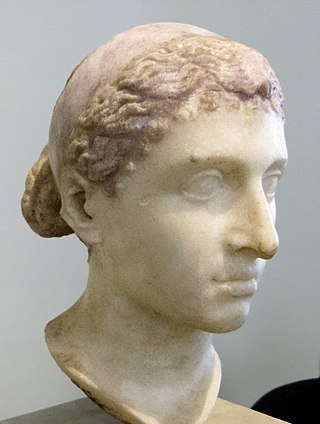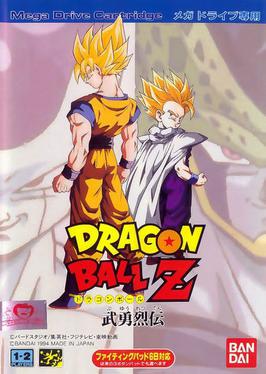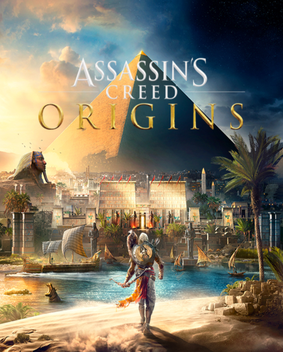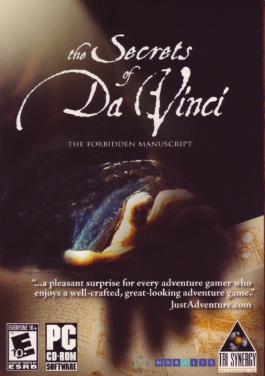
Astrology is a range of divinatory practices, recognized as pseudoscientific since the 18th century, that propose that information about human affairs and terrestrial events may be discerned by studying the apparent positions of celestial objects. Different cultures have employed forms of astrology since at least the 2nd millennium BCE, these practices having originated in calendrical systems used to predict seasonal shifts and to interpret celestial cycles as signs of divine communications. Most, if not all, cultures have attached importance to what they observed in the sky, and some—such as the Hindus, Chinese, and the Maya—developed elaborate systems for predicting terrestrial events from celestial observations. Western astrology, one of the oldest astrological systems still in use, can trace its roots to 19th–17th century BCE Mesopotamia, from where it spread to Ancient Greece, Rome, the Islamic world, and eventually Central and Western Europe. Contemporary Western astrology is often associated with systems of horoscopes that purport to explain aspects of a person's personality and predict significant events in their lives based on the positions of celestial objects; the majority of professional astrologers rely on such systems.

The zodiac is a belt-shaped region of the sky that extends approximately 8° north and south of the ecliptic, the apparent path of the Sun across the celestial sphere over the course of the year. Also within this zodiac belt appear the Moon and the brightest planets, along their orbital planes. The zodiac is divided along the ecliptic into 12 equal parts ("signs"), each occupying 30° of celestial longitude. These signs roughly correspond to the astronomical constellations with the following modern names: Aries, Taurus, Gemini, Cancer, Leo, Virgo, Libra, Scorpio, Sagittarius, Capricorn, Aquarius, and Pisces.

Cleopatra VII Thea Philopator was Queen of the Ptolemaic Kingdom of Egypt from 51 to 30 BC, and its last active ruler. A member of the Ptolemaic dynasty, she was a descendant of its founder Ptolemy I Soter, a Macedonian Greek general and companion of Alexander the Great. After the death of Cleopatra, Egypt became a province of the Roman Empire, marking the end of the last Hellenistic-period state in the Mediterranean and of the age that had lasted since the reign of Alexander. Her first language was Koine Greek, and she was the only known Ptolemaic ruler to learn the Egyptian language.

Arsinoë IV was the fourth of six children and the youngest daughter of Ptolemy XII Auletes. Queen and co-ruler of Ptolemaic Egypt with her brother Ptolemy XIII from 48 BC – 47 BC, she was one of the last members of the Ptolemaic dynasty of ancient Egypt. Arsinoë IV was also the half sister of Cleopatra VII. For her role in conducting the siege of Alexandria against her sister Cleopatra, Arsinoë was taken as a prisoner of war to Rome by the Roman triumvir Julius Caesar following the defeat of Ptolemy XIII in the Battle of the Nile. Arsinoë was then exiled to the Temple of Artemis at Ephesus in Roman Anatolia, but she was executed there by orders of triumvir Mark Antony in 41 BC at the behest of his lover Cleopatra VII.

Astrological belief in correspondences between celestial observations and terrestrial events have influenced various aspects of human history, including world-views, language and many elements of social culture.

Voyage: Inspired by Jules Verne is a point-and-click adventure game with pre-rendered graphics, developed by Kheops Studio and published by The Adventure Company for the PC in 2005. The game's story focuses on a French adventurer's journey to the Moon in the 19th century, and the ancient lunar civilization he subsequently finds.

Dragon Ball Z: Buyū Retsuden is a 1994 fighting video game developed and published by Bandai and Ecofilmes for the Sega Mega Drive. Based upon Akira Toriyama's Dragon Ball franchise, it is the only game in the series released for the Mega Drive, following the Frieza and Cell sagas. Its gameplay has been described as a combination of the original Super Butōden and Super Butōden 2, consisting of one-on-one fights using a three-button configuration, featuring special moves and two playable modes.

Nancy Drew: Legend of the Crystal Skull is the 17th installment in the Nancy Drew point-and-click adventure game series by Her Interactive. It is available for play on Microsoft Windows platforms. It has an ESRB rating of E for moments of mild violence and peril. Players take on the first-person view of fictional amateur sleuth Nancy Drew and must solve the mystery through interrogation of suspects, solving puzzles, and discovering clues. There are two levels of gameplay, Junior and Senior detective modes, each offering a different difficulty level of puzzles and hints, however neither of these changes affect the plot of the game. The game is loosely based on the book The Mardi Gras Mystery (1988).

Atlantis III: The New World,, is a 2001 fantasy adventure video game developed and published by Cryo Interactive, with Dreamcatcher Interactive publishing the game in North America. David Rhodes composed the musical score. It is the third game in the Atlantis series by Cryo, as well as the last one made before Cryo's closure. It was followed by Atlantis Evolution in 2004.

Kheops Studio was an independent video game development studio created in September 2003. Its games were published by Microïds, which acquired the brand and intellectual property as insolvency assets of Cryo Interactive in 2002. The company was co-founded by Benoît Hozjan, who also served as the creative director for the studio and Stéphane Petit, who served as technical director. Kheops developed adventure games for the PC platform and released several major successful games. The studio is best known for creating games that have been described by the developer as "cultural entertainment", that is, games which are heavily drawn from historical or literary sources to include a mixture of history and fiction. After filing for bankruptcy, the studio was closed down in January 2012.

Echo: Secrets of the Lost Cavern is a computer adventure game released in July 2005. It was developed by Kheops Studio and published by The Adventure Company. It is very similar to previous Kheops Studio games; the interface and gameplay are almost identical to Return to Mysterious Island. The player takes the role of Arok, a 15-year-old European Homo sapiens from the Paleolithic period.

Dracula 3: The Path of the Dragon is a 2008 point-and-click adventure video game developed by Kheops Studio for Microsoft Windows, and published by MC2 France under their Microïds label in Europe and Encore in North America. In 2010, an abridged version of the game developed by Tetraedge Games and published by Chillingo was released in a three-part episodic form for iOS. The full version of the game was ported to OS X in 2010, published by Coladia. Also in 2010, the three-part iOS version was made available for PC as the Dracula Series. In 2014, the abridged iOS version was made available as a single game on Steam.

Egypt III, known as The Egyptian Prophecy in North America, is a 2004 graphic adventure game developed by Kheops Studio and published by The Adventure Company. The player must solve an array of ancient riddles that will help a dying Pharaoh survive and restore Egypt to glory. The game is the third and final game in the Egypt trilogy, following Egypt 1156 B.C. and Egypt II: The Heliopolis Prophecy. In 2010, Microïds released an adaptation of the game, split into parts, for the Apple iPhone.

Necronomicon: The Dawning of Darkness, also known as Necronomicon: The Gateway to Beyond, is a 2000 video game developed by Wanadoo Edition and released for Windows and the PlayStation video game console.

Diabolik: The Original Sin is an adventure game developed by Italian studio Artematica Entertainment and published by Black Bean Games in 2009 for PlayStation 2, Wii, Windows, Nintendo DS, and PSP, based on the Italian comic book series Diabolik.

Cleopatra VII, the last ruler of Ptolemaic Egypt, died on either 10 or 12 August, 30 BC, in Alexandria, when she was 39 years old. According to popular belief, Cleopatra killed herself by allowing an asp to bite her, but according to the Roman-era writers Strabo, Plutarch, and Cassius Dio, Cleopatra poisoned herself using either a toxic ointment or by introducing the poison with a sharp implement such as a hairpin. Modern scholars debate the validity of ancient reports involving snakebites as the cause of death and whether she was murdered. Some academics hypothesize that her Roman political rival Octavian forced her to kill herself in a manner of her choosing. The location of Cleopatra's tomb is unknown. It was recorded that Octavian allowed for her and her husband, the Roman politician and general Mark Antony, who stabbed himself with a sword, to be buried together properly.

The tomb of Alexander the Great is attested in several historical accounts, but its current exact location remains an enduring mystery. Following Alexander's death in Babylon, his body was initially buried in Memphis by one of his generals, Ptolemy I Soter, before being transferred to Alexandria, where it was reburied. Julius Caesar, Cleopatra and Augustus, among others, are noted as having visited Alexander's tomb in Alexandria in antiquity. Its later fate is unknown, and it had possibly been destroyed by the 4th or 5th centuries; since the 19th century, over one hundred official attempts have been made to try to identify the site of Alexander's tomb in Alexandria.

Assassin's Creed Origins is a 2017 action role-playing video game developed by Ubisoft Montreal and published by Ubisoft. It is the tenth major installment in the Assassin's Creed series, following 2015's Assassin's Creed Syndicate. Principally set in Egypt, near the end of the Ptolemaic period from 49 to 43 BC, the story follows a Medjay named Bayek of Siwa and his wife Aya as they seek revenge for the murder of their son. It also explores the origins of the Assassin Brotherhood—referred here to as the Hidden Ones—and of their millennia-long conflict with the Order of the Ancients—forerunners to the Templar Order. The framing story, set in the 21st century, follows a new character, Layla Hassan, who relives Bayek and Aya's memories using a modified Animus device.

The Secrets of Da Vinci: The Forbidden Manuscript is an adventure game developed by Kheops Studio and published by Tri Synergy on June 7, 2006 on the PC. In 2009 it was released on the Mac OS X.

















